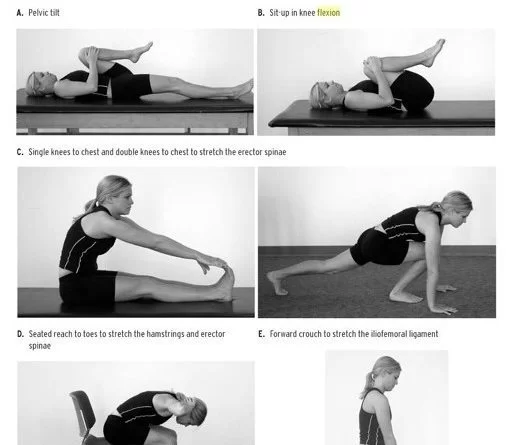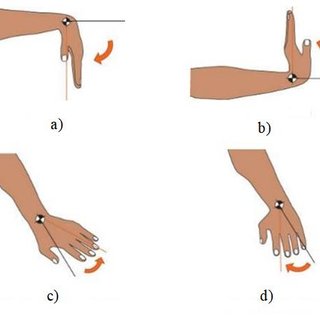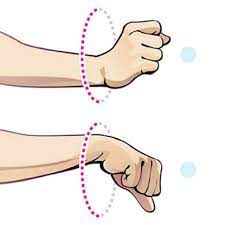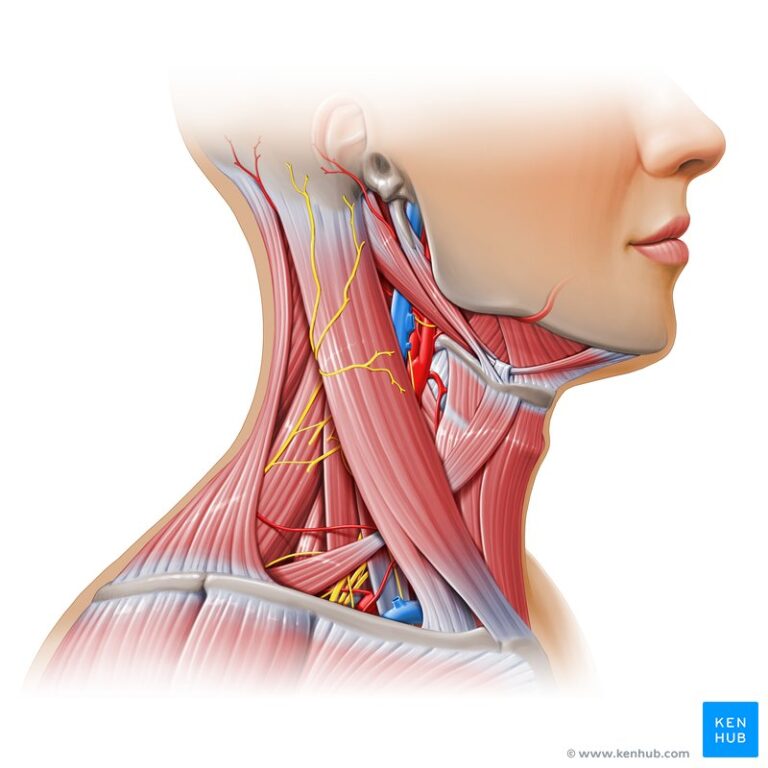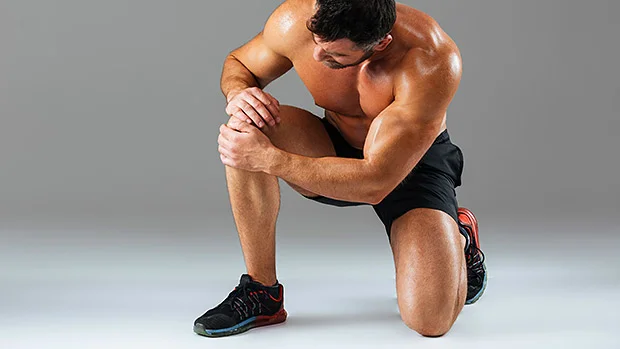Trapezius muscle strengthening exercise
Table of Contents
What is the trapezius muscle strengthening exercise?
Trapezius muscle strengthening exercise is a great way to improve the strength of the upper back and shoulder blade and also has many health benefits
- The trapezius is a large muscle & is shaped like the trapezoid. The trapezius muscle is divided into three parts upper, middle, as well as lower sections. This muscle action allows for the head, shoulder, & neck motions, twisting the trunk, standing erect, and lifting & using the arms.
- This is due to they have heavily worked their trapezius, the large, stingray-shaped muscle. The trapezius origin from right below the skull runs down the neck & across the shoulders & then continues down the spine in the “V” shape.
- This muscle works to stabilize the shoulders as well as the upper back. Bodybuilding may not be for you, but maintaining proper posture & avoid back pain, is important to keep the trapezius strong.
- The upper trapezius supports the arms & elevates the shoulder blades, during the middle & lower trapezius are essential for scapular retraction, depression, & rotation. Shrug the shoulders, raise the arms, & other motions use the trapezius, so training them to be as strong as they can be will help you out in more than just the big back department.
Health benefits by doing the trapezius muscle strengthening exercise
- Allows an increase in the strength of the shoulder.
- Helps to boost the neck muscles.
- Helps to strengthen the upper back muscles.
- Helps to improve posture.
- Strengthening the trapezius muscles
- Helps to stabilize the neck
- Helps to stabilize the upper back
- Helps to reduce the strain on the neck as well as shoulder muscles
- Helps to reduce chronic neck-to-shoulder pain
- Helps to move the scapula free.
- Helps the patient to carry objects overhead.
There have different types of strengthening exercises for the trapezius muscles
- Add these exercises to the upper body workout to start building a bigger, stronger trapezius.
Shoulder blade squeeze
- How to do this strengthening exercise:
- Unless the patient is a bodybuilder trying to get the large trapezius, the patient needs exercises to help the trapezius do its job well, stabilizing the shoulder as well as the upper back.
- For this exercise, the patient has to stand with good posture.
- Slowly squeeze the shoulder blades together & hold for 3 to 5 seconds.
- Slowly release the shoulder blades back to their starting positions.
- This exercise may also be done with the resistance band, using cables, or even holding the arms out front in the goalpost position.
- Do this 5 to 10 times in one session. Do two sessions in a day.
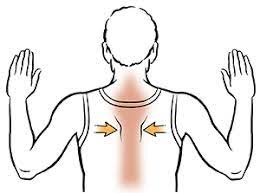
Shrug

- How to do this strengthening exercise:
- Simple shrugs exercise is another exercise to keep the trapezius strong. The shrug is very common & easy to implement, as well as this is one of the great exercises to activate the trapezius. For an added challenge, do this exercise with weights such as dumbbells in your hands.
- For this exercise, the patient has to Stand straight with good posture.
- Raise the shoulder joint as high as the patient can get them towards the ears with the shoulders.
- Hold for a count of 2 to 0.
- Release them back into their normal positions.
- Repeat 20 to 30 times in one session. Do three sessions in one day.
Upright row
- How to do this strengthening exercise:
- This is a very known exercise to strengthen the trapezius. The patient can also try this with the barbell or the dumbbell in the hands.
- For this exercise, the patient has to Stand straight.
- With the fists clenched, pull up the fists as high as the patient can while flexing the elbows, the hands should be close to the front of the body.
- Hold this position for a count of two to four.
- Release the arms back into the normal position, fists still clenched.
- Repeat 20 to 30 times in one set. Do one session in one day.
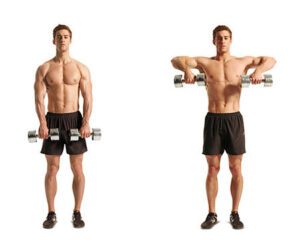
Pushup
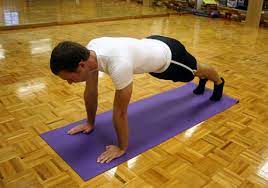
- How to do this exercise:
- There have many different variations of the pushup. Do this version that is easiest for you, A standard pushup, the pushup during kneeling on the floor, or the standing pushup against the wall. Place the hands flat on the floor or a wall.
- Lower the body toward the hands during keeping the back straight & the tummy tight.
- Do not let the head drop; the neck should be in line with the rest of the spine. Lower the body until the patient is close to the floor or a wall, & then push back into the upright position. Breathe in as you go down & breathe out as the patient pushes up.
- The key to the pushup is to concentrate on pushing the shoulders together while the exercise.
- Make the middle & lower trapezius work to do their work.
- Do 10 to 12 repetitions in one set per workout. Do it two times in one day.
Farmer’s Carry
- How to do this strengthening exercise:
- For this exercise, the patient has to grab the weight (dumbbells or kettlebells will do) in both hands by the sides & stand straight.
- Engage the core as well as back muscles, holding a strong, upright posture.
- Now walk forward holding the weight in your hands.
- Do this for 25 to 35 seconds of 2 to 3 sets in one session. Do two sessions in one day.
Dumbbell Military Press
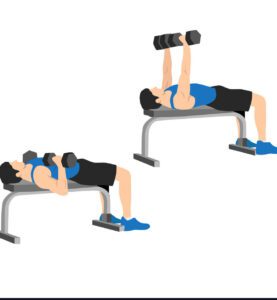
- How to do it:
- This classic exercise for standard shoulder builder, but the patient will nail the trapezius, too. Working with dumbbells allows him to work in more shoulder-safe positions, especially due to the patient will be less inclined to try to lift more weight than he can handle by stacking plates on the barbell.
- Hold a pair of dumbbells in your hands as well as raise them to the shoulders.
- Brace the core & glutes to set a firm foundation, the biggest mistake the patient wants to avoid is rounding the back under the weight.
- Keep the ribs flaring. Once the patient is ready to press, make sure that he is not lifting straight up.
- They want to move in the scapular plane about a few degrees in front of the trunk (to keep the rotator cuffs safe) so rotate the elbows out slightly.
- Contract the shoulder blades, then press the weight up.
- Do 10 to 20 repetitions for 2 to 3 sets in one day.
Dumbbell Snatch
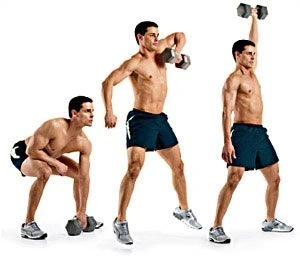
- How to do this strengthening exercise:
- The patient typically does not think of explosive moves such as snatches as back exercises, but posterior muscles like the trapezius are essential to proper form.
- The patient will get the whole body engaged to do the dumbbell snatch right, especially as the patient gets the dumbbell up above the head.
- Begin with the dumbbell on the ground in front of the patient between the legs with the feet wider than shoulder-width apart. Bend at the knees & hinge at the hips as well as hold the dumbbell the overhand grip.
- Now Sit backward on the heels, then explode up to stand, and drive the weight up close to the body. Pull the weight up as if the patient is zipping the coat, then pull slightly back & land under the weight overhead. Lower the weight to the shoulder slowly to complete the move.
- Do 10 to 15 repetitions for 2 to 4 sets in one day.
Bent Over Y
- How to do this strengthening exercise:
- This is a very simple exercise it can be used as a warmup.
- For this exercise, the patient has to Stand with the feet shoulder-width apart and grab light dumbbells with the thumbs facing up.
- Hinge at the hip to assume the bent-over position. Elevate the arms in front of the face forming the shape of the letter Y, holding the position for the beat. Slowly come back to the starting position.
- Do 10 to 12 repetitions for 2 to 3 sets in one session. Do three sessions in one day.
Pull up Shrug

- How to do this strengthening exercise:
- This exercise not only builds the trapezius but also this will also help the patient hone the pull-up form. The patient will also work the lattisimus dorsi, so he does not isolate one muscle.
- The patient has to hang from the pull-up bar, the spine should be aligned & core muscles tight.
- The shoulders should be pulled back & down to extend the head as well as the neck upward. Hold for a two count, then lower herself back into the starting position.
- Do 12 to 15 repetitions for 2 to 3 sets per day.
Barbell Shrug
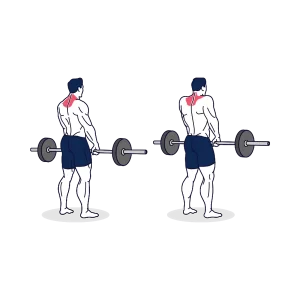
- How to do this strengthening exercise:
- The barbell shrug is the king of all the trapezius strengthening exercises. This targets the upper head of the trapezius, which is responsible for lifting the shoulder blades.
- Hold the barbell with an overhand grip that is just beyond shoulder-width apart, & let the barbell hang at arm’s length in front of the waist. The back should be naturally arched, and lean forward at the hip about 10 to 15 degrees.
- Flexed the knees slightly. Now shrug the shoulders toward the ears as high as you can. The arms should be extended. Pause, and after that reverse the movement back to the starting position.
- Do 10 to 15 repetitions for 2 to 3 sets in one session. Do two sessions in one day.
Rack Pull
- How to do this strengthening exercise:
- For this exercise, the patient has to Set up the rack or boxes so the bar is elevated above the shins.
- Hold a barbell around shoulder-width with the overhand grip.
- Hinge from the waist & push the hips back as well as feet through the floor, pulling the barbell up & the back should be straight. Pause at that point for 2 to 3 seconds, then control a barbell back down into the embark place.
- Do 10 to 18 repetitions for 2 to 3 sets in one session. Do two sessions in one day.
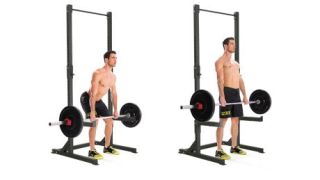
Dumbbell/Kettlebell Shrug
- How to do this strengthening exercise:
- Compared to the barbell shrug, a dumbbell or kettlebell shrug put less stress on the shoulder joints.
- That is due to the shoulders do not have to rotate to hold the barbell. This keeps them more stable as you do the motion.
- For this exercise, the patient has to stand with shoulder-feet width apart & hold a pair of dumbbells or Kettlebells in the hands.
- Let them hang at arm’s length by the sides, the palms facing each other. Shrug the shoulders towards the ear as high as possible by you.
- Pause in the up position for 5 seconds, then slowly lower the weights back to the embarking position.
- Do 15 to 20 repetitions for one to two sets in one session. Do two sessions in one day.
Cable Face Pull
- How to do this strengthening exercise:
- Get the face in on the action with this underrated trapezius move.
- This exercise may be done with the cable machine or even with the resistance band if the patient is focused on mastering the form to help bulletproof the back & shoulders. The face pull hits the lower trapezius when done right.
- For this exercise, the patient has to Set the cable machine or even resistance band roughly at eye-level height.
- Hold a cable rope handle or even the ends of the band in both hands in an underhand grip. Squeeze the shoulder blades to pull toward the face, the elbows should be high & resist the urge to lean forward.
- Pause to squeeze once the patient pulls back as far as he can, then control the cable or even bands back to the starting position.
- Do 10 to 15 repetitions for 2 to 3 sets in one day.

Incline Dumbbell Shrug
- How to do this strengthening exercise:
- This variation of shrug targets the lower trapezius. The lower trapezius function is pulling the shoulder blades down.
- For this exercise, a patient needs a low-incline bench. Then, hold a pair of dumbbells in each hand & lie chest down at 45 to 50 degrees on the bench.
- The arms should be hanging straight down, with both palms facing each other. By pulling the shoulder blades together shrug the shoulders.
- Hold for five to ten seconds then slowly lower this down to the starting position.
- Do 10 to 20 repetitions for 2 to 3 sets in one day.
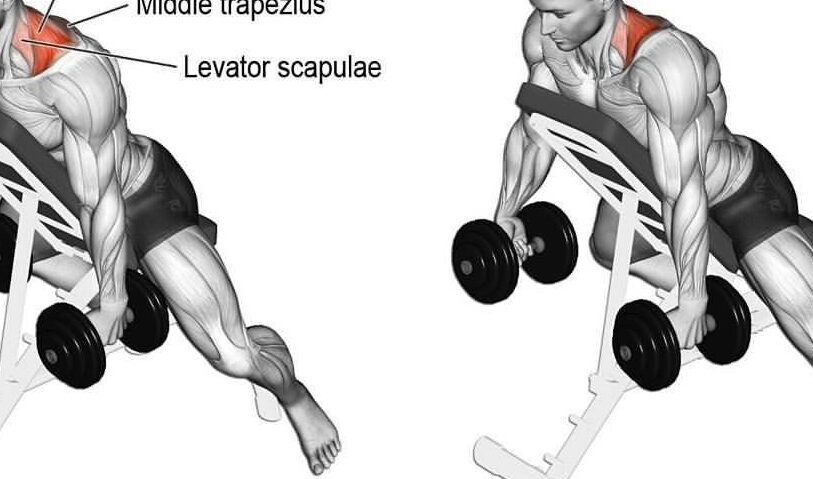
Dumbbell Jump Shrug
- How to do this dumbbell jump shrug strengthening exercise:
- The explosive motion adds power to the daily workout. The goal should be to do each repetition as quickly as possible while maintaining control of the weight at every time.
- Hold a pair of dumbbells in each hand as well as flex the hips & knees. Let the dumbbell hang at arm’s length just below the knees, the palms facing the sides. Do not round the lower back.
- Simultaneously thrust the hips forward, shrug the shoulders forcefully, & jump as much as the patient can do. Land as softly as possible, & repeat.
- Do this for 10 to 20 repetitions in one set per session. Do two sessions in one day.
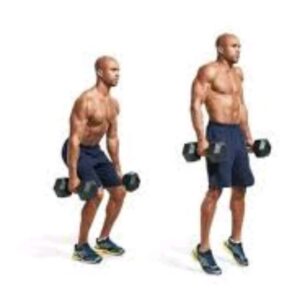
Barbell Behind-the-Back Shrug
- How to do this trapezius strengthening exercise:
- This variation of shoulder shrug targets the upper trapezius, middle trapezius, and levator scapulae, the rope-like muscle that runs down the back of the neck.
- When doing this exercise, do not stick the head forward or even downward. It can increase the risk of injury as well as prevent the trapezius from fully activating.
- This exercise is the same as a barbell shrug, except the patient is holding the barbell behind the body.
- Hold the barbell with the overhand grip so the palms are facing away from the patient, and the hands are shoulder-width apart.
- Let the barbell hang at arm’s length at the buttocks, & then shrug the shoulders toward the ears as much as possible. Hold for two to five seconds, then reverse this same motion again.
Barbell Row
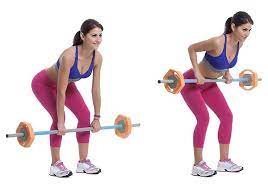
- How to do this trapezius strengthening exercise:
- Rowing exercises target the middle as well as lower trapezius & rhomboids, muscles that help keep the shoulder blades from moving as the patient lifts the barbell.
- That is important due to unstable shoulders may limit the strength in exercises for the chest & the arms. The upper trapezius, posterior deltoids, as well as rotator cuff muscles, will also help in the rowing motion.
- Hold a barbell with the overhand grip that is just beyond the shoulder width, & hold this at arm’s length. Flexed the hips as well as knees & lower the trunk until this is almost parallel to the floor. The back should be naturally arched.
- Pull the barbell to the upper abdominals as well as squeeze the shoulder blades toward each other. Hold for 2 to 4 seconds, then slowly lower a barbell back to the embarking position.
- Do ten to twenty repetitions for 2 to 3 sets in one session. Do two sessions in one day.
Dumbbell Lateral Raise
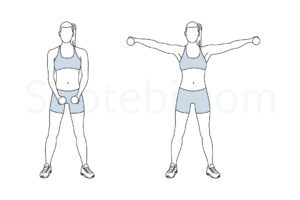
- How to do this strengthening exercise:
- Hold a pair of dumbbells & let them hang by the side. Stand tall, with the feet, shoulder, and width apart.
- Move the arms so that the palms are facing forward, as well as flex the elbows slightly.
- Without changing the bend in the elbows, elevate the arms to the sides as well as slightly in front of the trunk (in the scapular plane, remember) until it is at shoulder level.
- As the arms get close to parallel with the ground think about turning the thumbs slightly upwards towards the roof.
- The patient is biasing the shoulders into external rotation by doing this, which is safer for the rotator cuff muscle.
- The arms should form a T with the body. Pause for 2 seconds at the top of the motion, then slowly lower a dumbbell back to the embarking position.
- Do ten to twenty repetitions for one to two sets in one session. Do two sessions in one day.
Overhead Barbell Shrug
- How to do this strengthening exercise:
- Holding a barbell above the head as the patient shrugs utilize the upper trapezius. This also reduces the emphasis on the levator scapulae, the rope-such muscle that runs down the back of the neck and is frequently overused compared to the upper trapezius.
- For this exercise, the patient has to stand shoulder-feet width apart & Load the barbell with the low weight.
- Grab a barbell with a wide overhand grip the arms should be extended as well as locked the elbows, now shrug the shoulders towards the ear.
- Hold at that motion for a couple of seconds after that slowly back to the starting position.
- Do ten to fifteen repetitions for one to two sets.
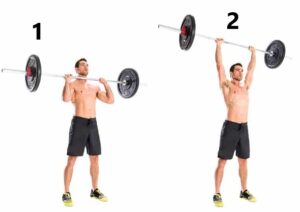
Snatch-Grip Barbell High Pull
- How to do this strengthening exercise:
- This exercise, however, is a fast power motion that relies on the trapezius, mid-back, rhomboids, deltoids, hamstrings, glutes, & lowers back to move the weight.
- For this exercise, the patient has to stand shoulder-feet width apart & Load the barbell with a low weight.
- Grab a barbell with a wide overhand grip & let this hang at arm’s length in front of the body. The hands should be a few inches from the weight plates. Flexed from the hips & knees to squat down. Keep the lower back naturally arched.
- Pull a barbell as high as the patient may be explosively standing up as you flex the elbows as well as raise the upper arms. The patient should rise on the toes. Reverse the motion to come back to the embarking position.
- Do ten to twenty repetitions for one to two sets.
Dumbbell Overhead Carry
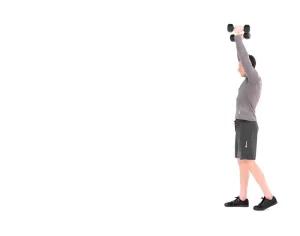
- How to do this strengthening exercise:
- If the lower body is moving, the upper body is also doing an isometric hold. That means the patient is increasing the trapezius time under tension, spurring muscle growth.
- For this exercise, the patient has to stand with shoulder-feet width apart & hold a pair of dumbbells as well as press them over the head, keeping the palms facing each other.
- The upper arms should be next to the ears, withholding dumbbells overhead the patient has to Walk forward.
- Do ten to twenty repetitions for 2 to 3 sets.
Scaption
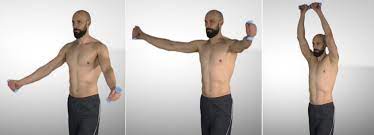
- How to do scaption strengthening exercise:
- While this exercise primarily hits the anterior deltoids, rotator cuff, & serratus anterior, the lower trapezius as well as rhomboids also aid in lifting the weight.
- This exercise helps to balance the muscles that rotate the shoulder blades. Adding this exercise to the upper-body routine will help build stronger, healthier shoulders & a better posture.
- For this exercise, the patient has Stand with the feet shoulder-width apart, and grab a pair of dumbbells at arm’s length next to the sides.
- The palms should be facing each other & the elbows slightly flexed. Stand as tall as the patient can.
- Without changing the bend in the elbows, elevate the arms up to a 30-degree angle to the body (so that they form a Y) until they are at shoulder level. The thumb sides of both hands must be facing up.
- Pause, and after that slowly lower the dumbbells back to the embarking position.
- Do ten to twenty repetitions for one to two sets.
Safety and precautions
- Never do trapezius workouts without learning the proper technique from an experienced trainer or physical therapist. This will help the patient to avoid injuries & soreness in muscles.
- Give the muscle to reasonable targets & never try to achieve too much fast. Begin with slows & builds upon the sets as well as repetitions.
- Listen to the body. If the patient feels pain while exercising, stop doing immediately & consult the physical therapist or trainer.
- Start the trapezius workout fitness plan only after discussing it with the therapist. It is especially necessary for people who have some past health problems or are on some comorbidity.
- Always do trapezius stretching before & after the strength training. It will help the patient to improve circulation & warms the muscles before the trapezius muscles workout.
- Even the best trapezius exercises would not work if the patient does not use the equipment properly. It will prevent strains & injuries.
When did you not do this exercise?
- If the pare already suffering from neck as well as shoulder pain then avoid this exercise.
- If the healthcare provider is advised the patient to take rest.
- If the patient feels any neck or even shoulder pain while this exercise then stops immediately.
- If the patient is suffering from back pain then avoid weight-lifting exercises.
- If the arm bone is fractured recently.
- If the patient recently feels any cervical problems.
FAQ
Trapezius muscle weakness as well as wasting is usually the result of injury to the nerve which makes the muscle work, known as the Spinal Accessory nerve. This nerve can be injured after surgery on the next (for eg. Lymph node biopsy, parotid surgery, as well as carotid surgery).
If this is mild, the trapezius strain may hurt the patient for about one week or two. Mostly, soft neck strains can self-heal in about a month, but if the patient got a severe Trapezius strain, this might take almost 12 or more weeks to heal completely.
Trapezius myalgia (TM) is the complaint of pain, stiffness, & tightness of the upper trapezius muscle. This is characterized by acute or even persistent neck-shoulder pain. TM is not a medical disorder or disease but rather a symptom of an existing underlying condition. The pain in the muscle can last a few days or longer.
The injury to the trapezius may cause: Limited mobility, reduced range of motion, or muscle weakness (the patient may not be able to shrug the shoulders or raise the arm). Neck as well as shoulder pain & stiffness. Pain between the shoulder blades.
Physical and mental stress can make the trapezius muscle tight, leading to pain in the neck & shoulders. Fortunately, learning to give yourself a trap massage can ease trap tension.

